-
 New productRock Shox sticker
New productRock Shox sticker- €0.99
-
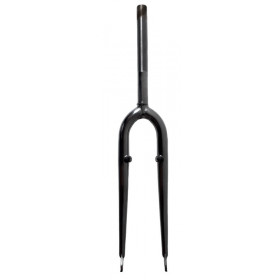 New product26 inch rigid chrome v-brake mountain bike fork
New product26 inch rigid chrome v-brake mountain bike fork- €48.99
-
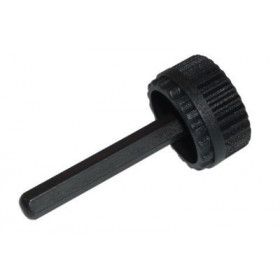 New productSR Suntour large axle gear wheel for LO and SF11 XCR-LO cartridge
New productSR Suntour large axle gear wheel for LO and SF11 XCR-LO cartridge- €4.99
-
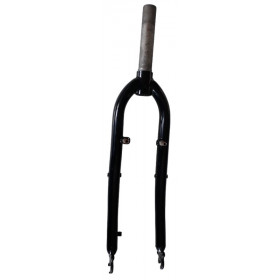 New productRigid fork 26 inches steel threaded
New productRigid fork 26 inches steel threaded- €48.99
-
 UsedFork Rock Shox Judy 29
UsedFork Rock Shox Judy 29- €79.99
-
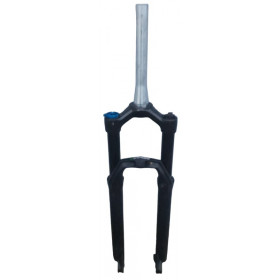 Used29 inches Zoom fork adjustable lockable
Used29 inches Zoom fork adjustable lockable- €44.99
-
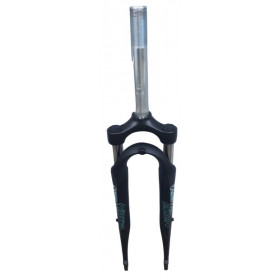 Used28 inches Zoom fork
Used28 inches Zoom fork- €34.99
-
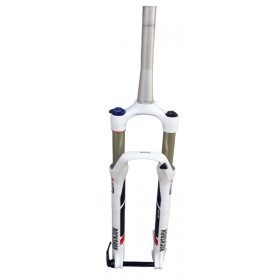 New product -40%Fork Rock Shox Recon RL gold 29 solo air 100 mm
New product -40%Fork Rock Shox Recon RL gold 29 solo air 100 mm- €233.99
- €389.99
-
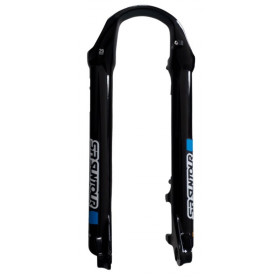 New productFork sliders SR Suntour XCR 29 boost
New productFork sliders SR Suntour XCR 29 boost- €44.99
-
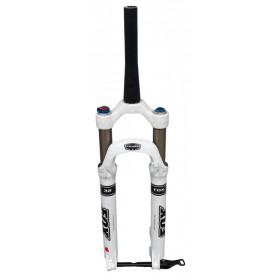 More detailsUsed Out-of-StockFox 32 RL fork 26 inches
More detailsUsed Out-of-StockFox 32 RL fork 26 inches- €229.99
Showing 1-10 of 10 item(s)
The MTB fork is an essential component that greatly influences the performance of the bike on varied routes, particularly on hilly, technical and often demanding terrain, it's a part of the MTB frameset. Here is an overview of the important features and functions of a Cross Country MTB fork:
1. Travel (travel):
MTB fork travel represents the maximum distance the suspension can compress. For Cross Country, forks generally have a shorter travel compared to other disciplines, often between 80mm and 120mm. This helps maintain pedaling efficiency while providing some shock absorption capacity.
2. Suspension system:
Cross Country mountain bike forks can be equipped with different suspension systems, including rigid (non-suspension) forks, coil spring forks, air forks and air spring forks. Air forks are common for their light weight and ability to fine-tune preload and compression.
3. Suspension settings:
Cross Country mountain bike forks typically offer adjustment options to accommodate rider weight, terrain type, and personal preference. Adjustments often include preload, compression, and sometimes rebound.
4. Lockout:
Lockout is a function that locks the suspension, making it rigid. This is particularly useful on climbs or sections of flat terrain, where active suspension can result in a loss of pedaling energy.
5. Tapered head tube:
Some models of Cross Country mountain bike forks are equipped with tapered head tubes. This design provides better rigidity at the front of the bike, improving steering precision. The MTB stem is fixed on this tube.
6. Offset pivot:
The offset pivot is the angle formed between the axle of the fork and the point where the wheel is mounted. An offset pivot can affect the handling of the bike. XC forks often have a less pronounced offset pivot for better stability.
7. Material:
Cross Country mountain bike forks are typically made from aluminum or carbon to minimize weight while maintaining adequate rigidity. Carbon forks are often favored for their lightness.
8. Compatibility with disc brakes:
Most Cross Country mountain bike forks are designed to be compatible with disc brakes, which provide better stopping power, especially on technical terrain.
9.Maintenance:
Some forks are designed for ease of maintenance, with systems that allow users to adjust or replace seals and suspension cartridges.
10. Ground clearance:
A MTB fork can be designed to provide adequate ground clearance, allowing the rider to traverse obstacles such as roots or rocks without snagging.
In summary, the MTB fork is a crucial component that impacts the ride quality and performance of the bike on varied terrain. Features such as travel, suspension system, settings and material are carefully designed to meet the specific needs of the Cross Country discipline.
